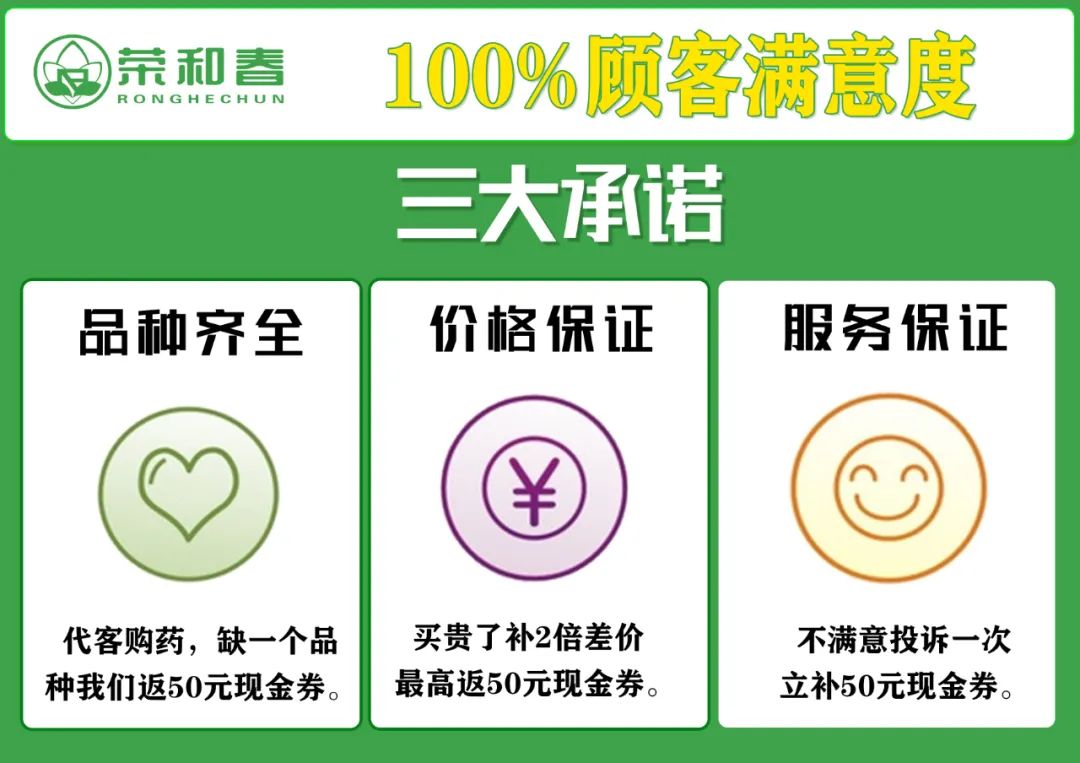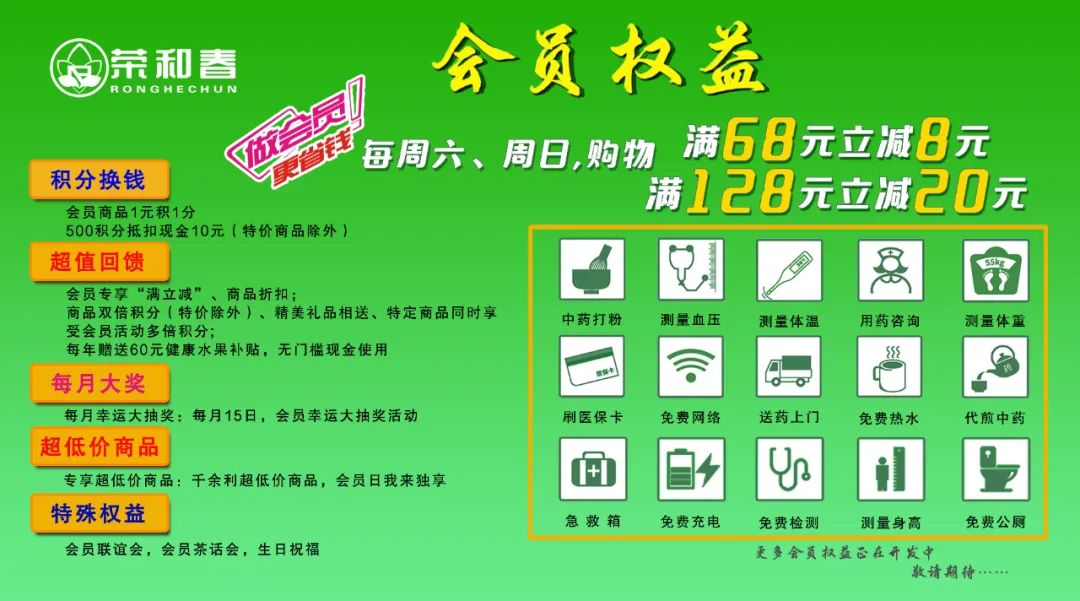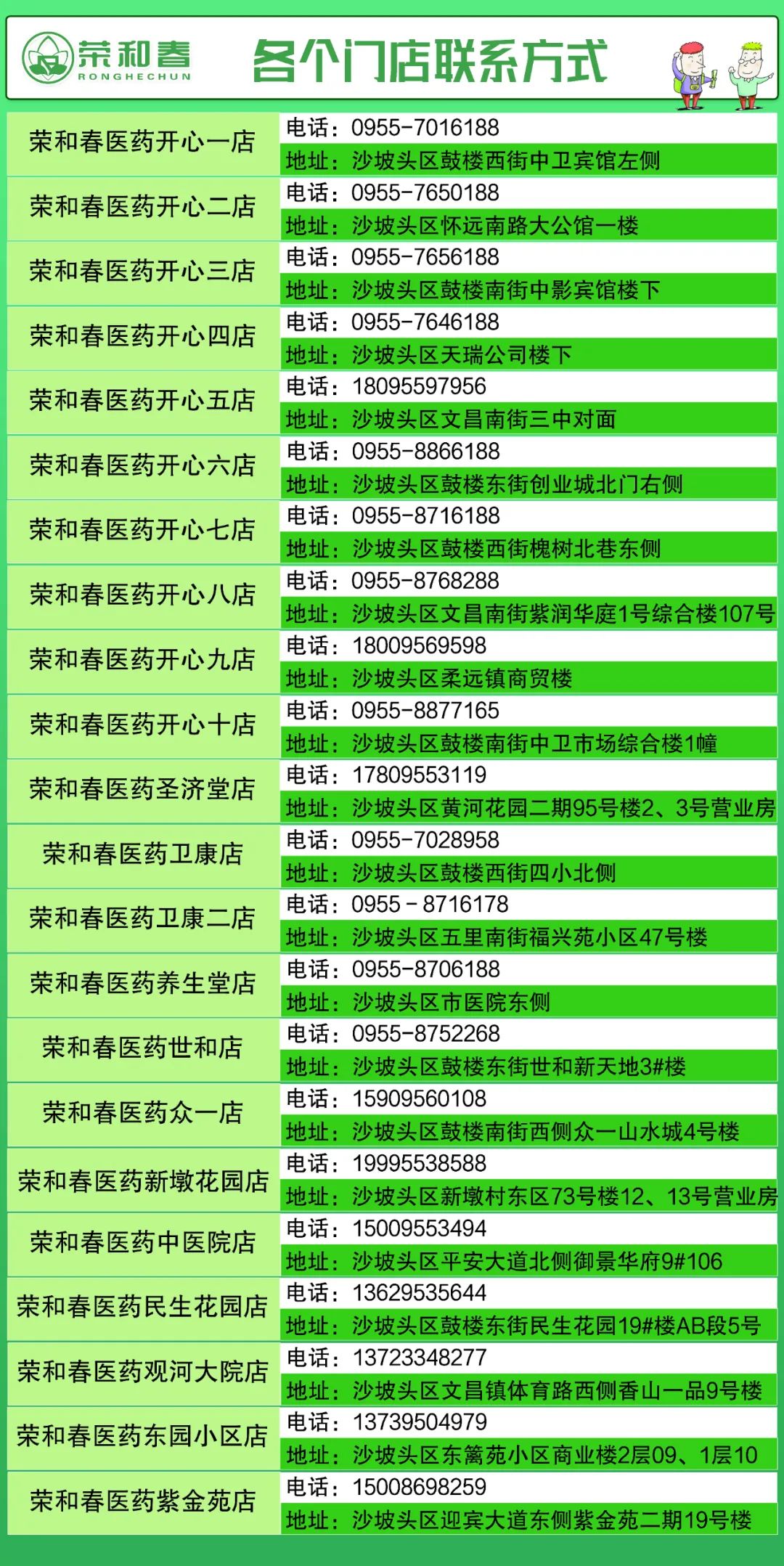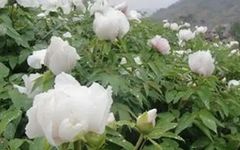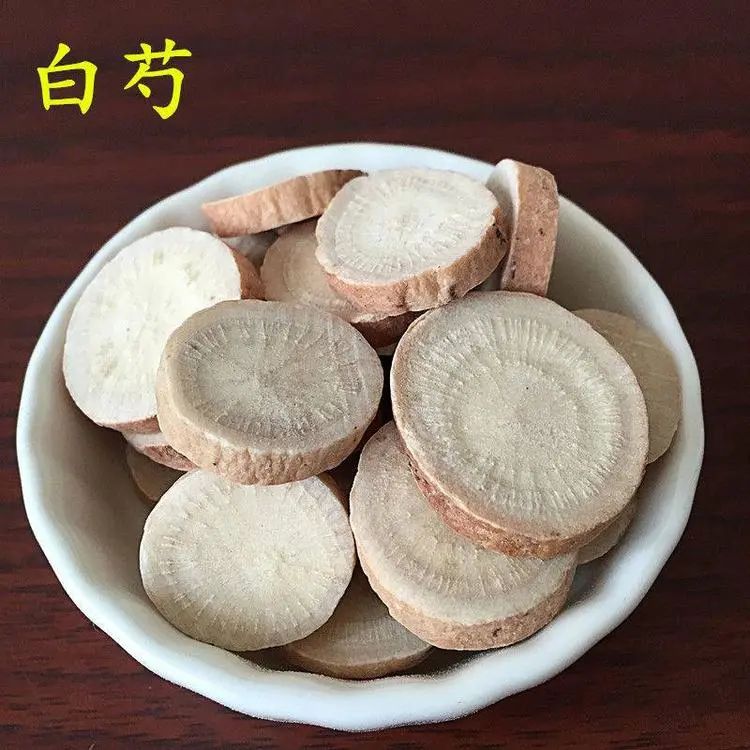
【Introduction to Bai Shao】Plant properties: Bai Shao (白芍) is cultivated in Bozhou, Anhui, and flowers in May. The flowers are harvested and dried for use as flower tea! Bai Shao balls, Bai Shao flowers, and Bai Shao petals are available in the market! Generally, the peony balls sold online are Bai Shao balls.【Name】Bai Shao (白芍)【Source】It is the root of the cultivated species of the Ranunculaceae family, Peony (芍药). The roots are harvested in summer and autumn after being planted for 3-4 years. The rhizomes and fibrous roots are removed, cleaned, and briefly boiled in hot water to soften the roots, then dried in the sun.
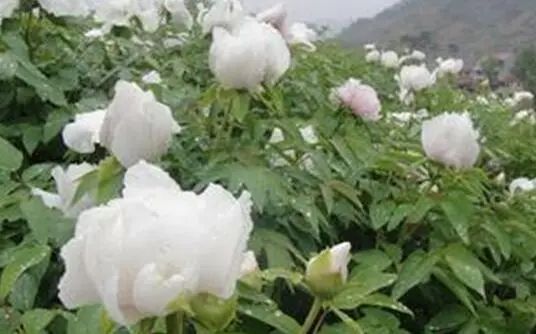
【Morphology】Bai Shao is a perennial herb, 50-80 cm tall. The roots are thick, usually cylindrical or slightly spindle-shaped. The stems are erect, smooth, and hairless. The leaves are alternate; they have long petioles; the leaflets are twice compound, oval to lanceolate, 8-12 cm long, 2-4 cm wide, with a gradually pointed or sharp tip, and a wedge-shaped base. The leaf margins are entire, with very fine papillae. The upper surface is dark green, while the underside is light green, with prominent veins. The base of the leaves often has a reddish tint. The flowers are very large, solitary at the top of the flower stem, with 2-5 flowers per stem, which is 9-11 cm long; there are 3 sepals, leaf-like; about 10 or more petals, ovate, white, pink, or red; numerous stamens with yellow anthers; 3-5 carpels, separate. The fruit is a follicle, 3-5 in number, oval, with a hooked tip bending outward. The flowering period is from May to July, and the fruiting period is from June to July.Bai Shao grows in shrub thickets or grasslands on hillsides and valleys, and is commonly cultivated in plains. It is distributed in Anhui, Heilongjiang, Jilin, Liaoning, Hebei, Henan, Shandong, Shanxi, Shaanxi, Inner Mongolia, and other regions. It is cultivated nationwide.
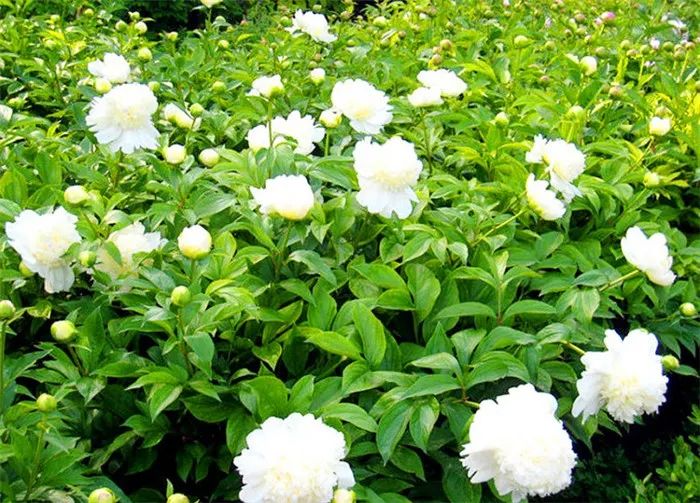
Bai Shao is a perennial herb, 40-70 cm tall, hairless. The roots are thick, spindle-shaped or cylindrical, dark brown. The stems are erect, branching above, with several membranous sheath-like scales at the base. The leaves are alternate; the petioles can be up to 9 cm long, with shorter petioles at the top of the stem; the lower leaves are twice compound, while the upper leaves are thrice compound; the leaflets are narrow oval, elliptical, or lanceolate, 7.5-12 cm long, 2-4 cm wide, with a gradually pointed tip, wedge-shaped or oblique base, and white cartilaginous serrations on the edges. Both surfaces are hairless, with short soft hairs along the leaf veins on the underside, and are nearly leathery. The flowers are bisexual, several bloom at the top of the stem and in the leaf axils, with a diameter of 7-12 cm; there are 4-5 bracts, lanceolate, of unequal size; 4 sepals, broad oval or nearly round, 1-1.5 cm long, 1-1.7 cm wide, green, persistent; 9-13 petals, ovate, 3.5-6 cm long, 1.5-4.5 cm wide, white, sometimes with deep purple spots or pink at the base, cultivated varieties have petals of various colors and are double-flowered; numerous stamens, filaments 7-12 mm long, yellow anthers; the flower disc is shallowly cup-shaped, enveloping the base of the carpels, with blunt and rounded lobes at the tip; 2-5 carpels, separate, hairless. The follicle is oval or oval-shaped, 2.5-3 cm long, 1.2-1.5 cm in diameter, with a pointed tip. The flowering period is from May to June, and the fruiting period is from June to August.
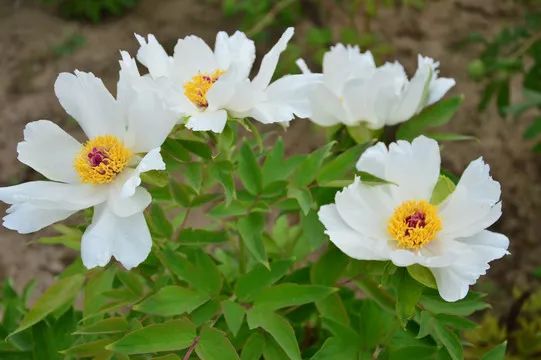
2. The main morphological difference between Mao Guo Bai Shao (毛果芍药) and Bai Shao is that the carpels and immature fruits are densely covered with soft hairs, while the mature follicles are sparsely covered with soft hairs.【Processing】Bai Shao: Remove impurities, separate by size, soak in water until 80% translucent, drain, dry, and ensure uniform moisture inside and out, slice, and dry. Wine Bai Shao: Take Bai Shao slices, spray evenly with yellow wine, slightly moisten, and stir-fry in a pot over low heat, then cool. (For every 100 jin of Bai Shao slices, use 10 jin of yellow wine.) Fried Bai Shao: Take Bai Shao slices, stir-fry in a pot over low heat until slightly yellow, then cool. Charred Bai Shao: Take Bai Shao slices, stir-fry in a pot over high heat until charred yellow, spray with a little clean water, then cool and dry. Soil-fried Bai Shao: Take Fulonggan fine powder, heat in a pot, add Bai Shao slices; stir-fry until the outside is coated with soil color, then remove, sift out the soil, and cool. (For every 100 jin of Bai Shao slices, use 20 jin of Fulonggan fine powder.)
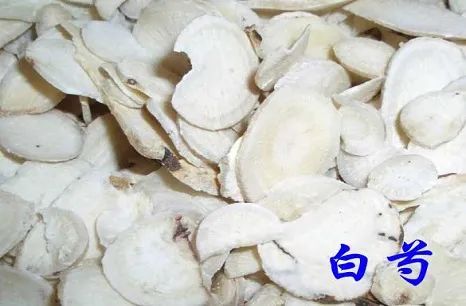
① “Leigong’s Theory of Processing” states: “After harvesting Bai Shao, dry it in the sun at noon, scrape off the coarse skin and soil with a bamboo knife, and pound it, then mix with honey water and steam, and dry it from the time of the snake to the time of the horse.”② “Bencao Mengquan” states: “Soak Bai Shao in wine and expose it to sunlight, avoiding fire.”
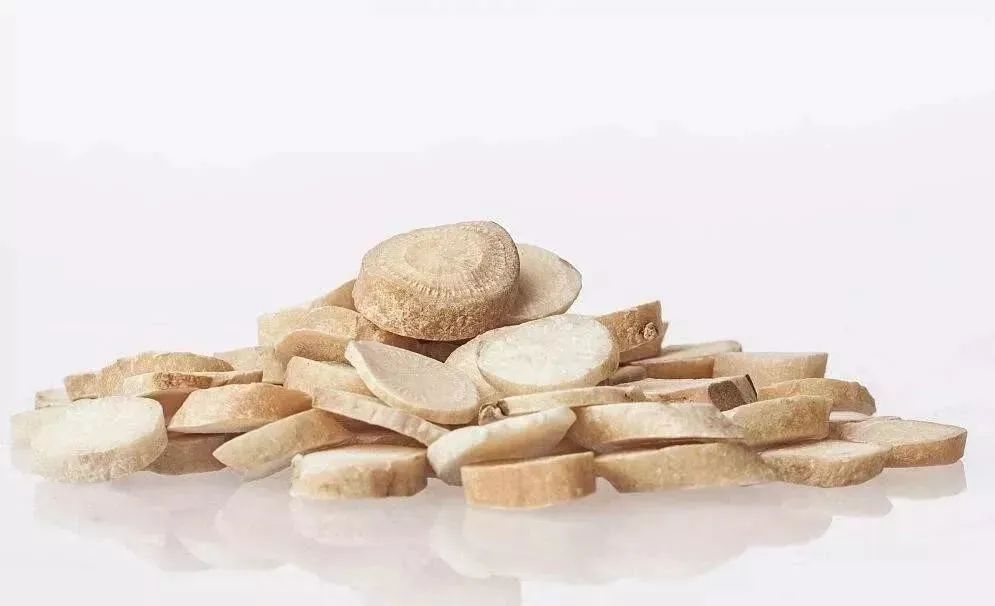
【Properties and Flavor】Bitter and sour, cool.① “Shennong’s Classic of Materia Medica” states: “Bitter flavor, neutral.” ② “Wupu Bencao” states: “Tongjun: Sweet, non-toxic. Qibo: Salty. Li’s: Slightly cold. Leigong: Sour.”③ “Bencao Bian” states: “Sour, neutral, slightly cold, with slight toxicity.”【Meridian Entry】Enters the Liver (肝) and Spleen (脾) meridians.① “Pinhui Jingyao” states: “Acts on the Hand Taiyin and Foot Taiyin meridians.”② “Bencao Jing Shu” states: “A meridian-invigorating herb for the Hand and Foot Taiyin, enters the blood divisions of the Liver and Spleen.”
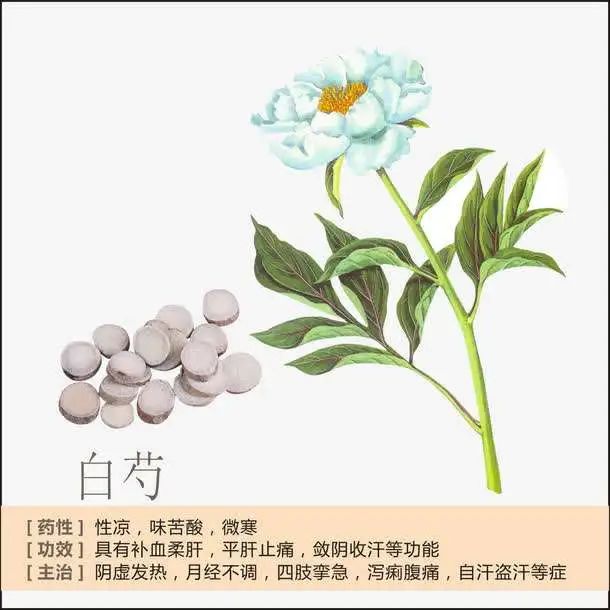
【Effects】Nourishes blood, softens the liver, alleviates pain, and restrains sweating. It treats chest and abdominal pain, dysentery, spontaneous sweating, night sweats, yin deficiency with fever, irregular menstruation, metrorrhagia, and leukorrhea.① “Shennong’s Classic” states: “It is effective against evil qi causing abdominal pain, removes blood stasis, breaks up masses, treats cold and heat hernias, alleviates pain, promotes urination, and benefits qi.”② “Bencao Bian” states: “It smooths the blood vessels, alleviates pain, disperses evil blood, expels stagnant blood, removes water qi, benefits the bladder and intestines, and treats abscesses and swellings, as well as seasonal cold and heat, and abdominal pain from evil qi.” ③ “Yao Xing Lun” states: “It treats lung evil qi, abdominal pain from blood stasis, promotes the flow of qi in the viscera, treats evil pain and blood stasis, and is effective against seasonal diseases and bone heat, strengthens the five organs, tonifies kidney qi, treats abdominal distension, and alleviates blood stasis in women, and can dissolve pus.”④ “Tang Bencao” states: “It benefits women’s blood.”
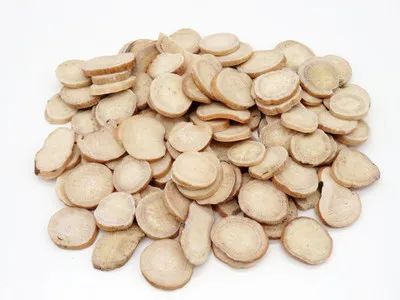
⑤ “Rihua Zi Bencao” states: “It treats wind and supplements tuberculosis, addresses all women’s diseases, and various ailments before and after childbirth, regulates menstruation, reduces fever and restlessness, benefits qi, treats seasonal heat diseases, pestilence, and mania, regulates women’s blood flow, and treats intestinal wind with blood, hemorrhoids, and sores, headaches, improves vision, red eyes, and pterygium.”⑥ “Yixue Qiyuan” states: “It calms the spleen, treats abdominal pain, restrains stomach qi, alleviates diarrhea, harmonizes blood, consolidates the pores, drains the liver, and tonifies the spleen and stomach.”⑦ Wang Haogu states: “It regulates the middle qi, treats spleen deficiency with fullness, heart distension, pain in the flanks, good belching, lung distension, and cough, nasal bleeding, dry eyes, insufficient liver blood, and yangwei disease with cold and heat, and pain in the belt meridian with abdominal fullness, as if sitting in water.”⑧ “Diannan Bencao” states: “It drains spleen heat, alleviates abdominal pain, stops diarrhea, restrains liver qi counterflow pain, nourishes the heart, liver, and spleen blood, smooths the meridians, descends qi, and alleviates liver qi pain.” 【Cautions】Should not be used alone for deficiency-cold conditions.Contraindicated with Li Lu (反藜芦).1. “Bencao Jing Jizhu” states: “Avoid Shi Hu (石斛), Mang Xiao (芒硝). Fear Xiao Shi (消石), Bie Jia (鳖甲), Xiao Ji (小蓟). Contraindicated with Li Lu.”2. “Bencao Yanyi” states: “Blood-deficient cold people should avoid this herb. The ancients said to reduce Bai Shao to avoid middle cold, which should not be ignored.”3. “Bencao Jing Shu” states: “Bai Shao is sour and cold; it is contraindicated for cold abdominal pain, cold-induced diarrhea, and sensations of cold in the intestines and stomach.”4. “Bencao Zheng” states: “If the spleen qi is cold and fullness is difficult to transform, it should be avoided.”5. “Yao Pin Hua Yi” states: “Avoid in cases of rashes.”6. “De Pei Bencao” states: “Avoid in cases of spleen qi deficiency-cold, pure blood diarrhea, and postpartum conditions.”
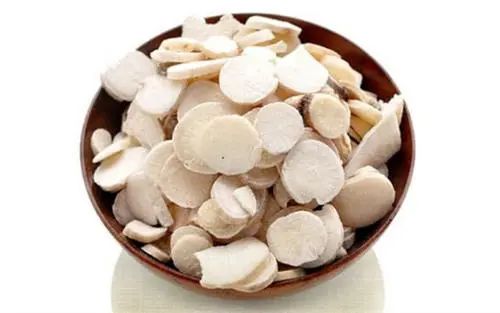
【Additional Formulas】① For treating women’s flank pain: 4 liang of Xiang Fu Zi (香附子) (2 bowls of yellow vinegar, 1 liang of salt, boiled until dry), Rou Gui (肉桂), Yan Hu Suo (延胡索) (stir-fried), Bai Shao. Grind into a fine powder, take 2 qian each time, decoct in boiling water, and take at any time. (From “Zhu’s Collection of Verified Medical Formulas” – Bai Shao Decoction)② For treating dysentery with pus and blood, urgency, and heaviness: 1 liang of Bai Shao, 0.5 liang of Dang Gui (当归), 0.5 liang of Huang Lian (黄连), 2 qian of Bing Lang (槟榔), 2 qian of Mu Xiang (木香); 2 qian of Gan Cao (甘草) (stir-fried), 3 qian of Da Huang (大黄), 0.5 liang of Huang Qin (黄芩), 2.5 qian of Guan Gui (官桂). Finely chop, take 0.5 liang each time, with 2 bowls of water, decoct until 1 bowl remains, and take warm after meals. (From “Suwen on Disease Mechanisms and Life Preservation” – Bai Shao Decoction)③ For treating abdominal masses during pregnancy: 3 liang of Dang Gui, 1 jin of Bai Shao, 4 liang of Fu Ling (茯苓), 4 liang of Bai Zhu (白术), 0.5 jin of Ze Xie (泽泻), 0.5 jin of Chuan Xiong (川芎) (or 3 liang). Grind these six ingredients into a powder. Take a small spoonful mixed with wine, three times a day. (From “Jinkui Yaolue” – Dang Gui Bai Shao Powder)④ For treating postpartum abdominal pain due to blood qi attacking the heart: 2 liang of Bai Shao, 1 liang each of Gui (桂) (peeled) and Gan Cao (甘草) (roasted). Grind these three ingredients, take 3 qian each time, with 1 bowl of water, decoct until 7 parts remain, strain, and take warm, without time restrictions. (From “Sheng Ji Zong Lu” – Bai Shao Decoction)
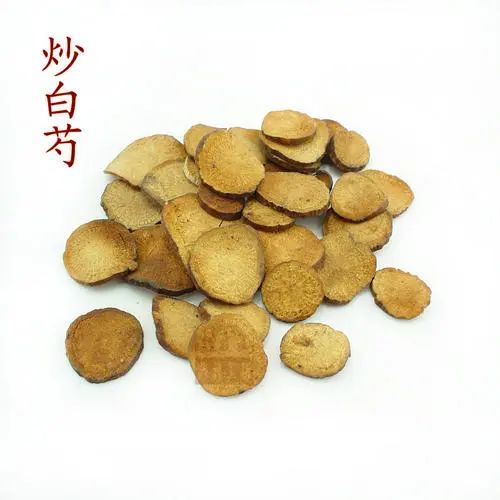
⑤ For treating dysmenorrhea: 2 liang of Bai Shao, 8 qian of Gan Jiang (干姜). Grind into a fine powder, divide into eight packets, and take one packet daily with yellow wine during menstruation, for three consecutive weeks. (From Inner Mongolia “Selected Materials on New Medical Methods of Chinese Herbal Medicine”)⑥ For treating chronic leucorrhea: 3 large liang of Bai Shao, 0.5 large liang of Gan Jiang. Finely chop, fry until yellow, pound and sift. Take 2 qian on an empty stomach with juice, twice a day. (From “Guang Li Fang”)⑦ For treating bleeding from wounds: 1 liang of Bai Shao, fry until yellow, pound finely into a powder. Take 2 qian with wine or rice wine. Take three times initially, gradually increasing. (From “Guang Li Fang”)⑧ For treating swollen and painful feet: 6 liang of Bai Shao, 1 liang of Gan Cao. Grind into a powder, take with white soup. (From “Seasonal Records”)⑨ For treating pain from wind toxin in the bones and marrow: 2 fen of Bai Shao, 1 liang of Hu Gu (虎骨) (roasted). Grind into a powder, place in a silk bag, soak in three sheng of wine for five days. Take 3 he each time, three times a day. (From “Experience of Later Formulas”)
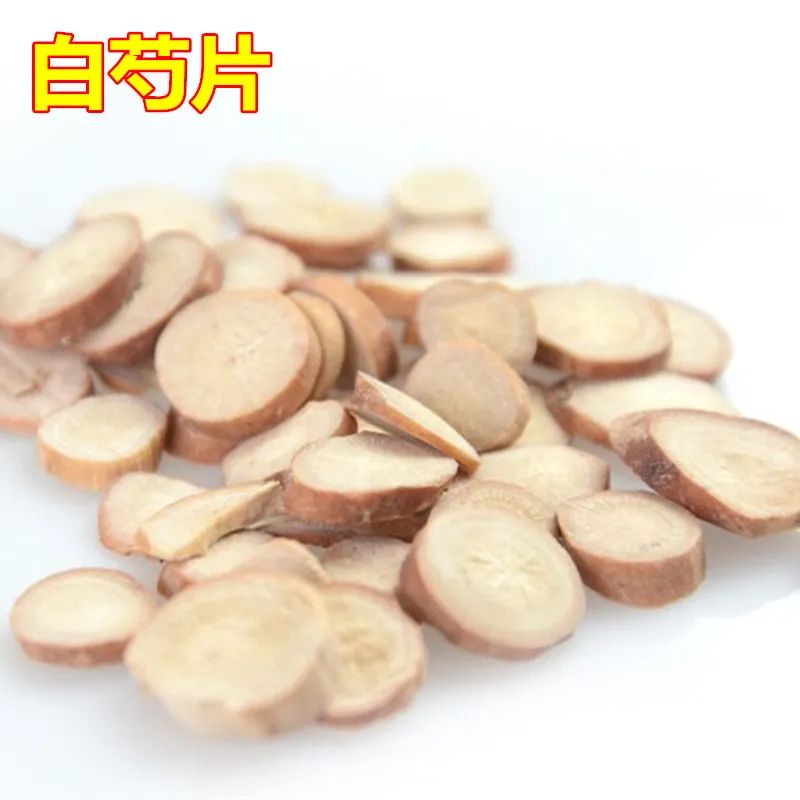
This article is compiled from the internet.
Copyright belongs to the original author. If there is any infringement, please contact us for deletion.
